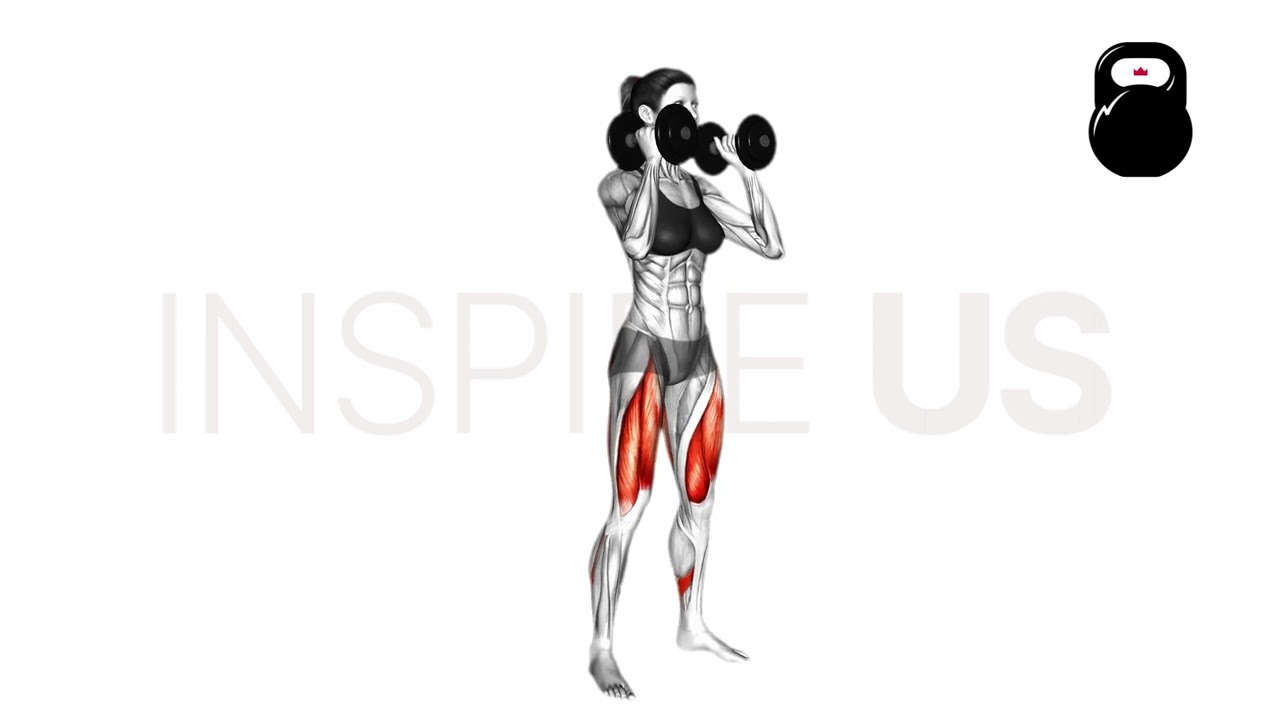Dumbbell Front Squat: Muscles Worked and More
Dumbbell front squats are a form of lower body exercise involving a squatting motion with a pair of dumbbells held up to shoulder-height.
They primarily target the quadriceps muscles at the front of the upper leg, and are often used as a more back-friendly alternative to conventional back squats.
What is a Dumbbell Front Squat?
The dumbbell front squat is a free weight bilateral compound movement involving extension and flexion of both the hip and knee joints.
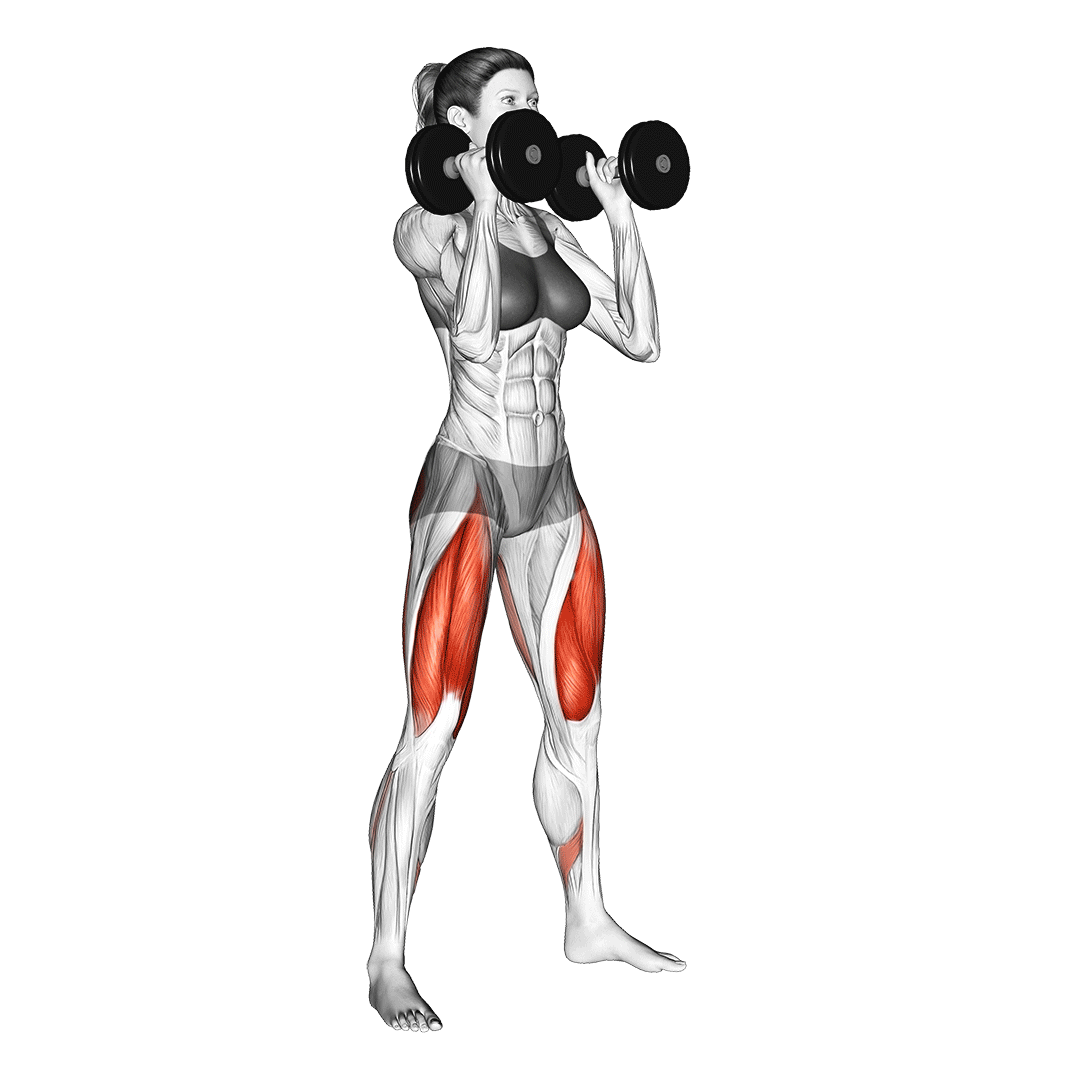
In actual training programming, the dumbbell front squat is used as either the primary driver of lower body training stimulus - or as a secondary exercise to the heavier back squat.
In comparison to other squat variations, the dumbbell front squat features a far more vertical torso orientation and somewhat greater emphasis on the quadriceps muscles as a result.
It is important to make the distinction between dumbbell goblet squats and dumbbell front squats, as they serve somewhat differing purposes.
Dumbbell goblet squats primarily use only a single dumbbell, and will involve said dumbbell being held at the front of the torso between both palms. The dumbbell front squat, on the other hand, will require two dumbbells and will place them atop the shoulders.
How to Do a Dumbbell Front Squat
To perform a repetition of the dumbbell front squat, the lifter will begin by first racking a pair of dumbbells atop their shoulders, elbows pointed forwards and trunk upright. The feet should be set shoulder-width apart, toes pointing forwards.
Bracing the core so as to ensure the lower back remains neutral, the lifter then pushes their hips back and descends into a full squat - bending their knees as the hips travel backwards.
The trunk should remain vertical throughout the entire movement, with as little forward hinging present as possible.
Once the hips are at least parallel to the top of the knees, the lifter then drives through their heels and rises back into a standing position. This completes the repetition.
Sets and Reps Recommendation:
Front squats are an exercise most effective when in the middle range of both resistance and volume.
3-5 sets of 8-12 repetitions with a moderate amount of weight should suffice for most training purposes.
What Muscles are Worked by Dumbbell Front Squats?
Dumbbell front squats are called a compound exercise as they involve dynamic contraction of more than a single muscle group. These muscles are classed as “mobilizer” muscles due to their contribution to actual force output and movement.
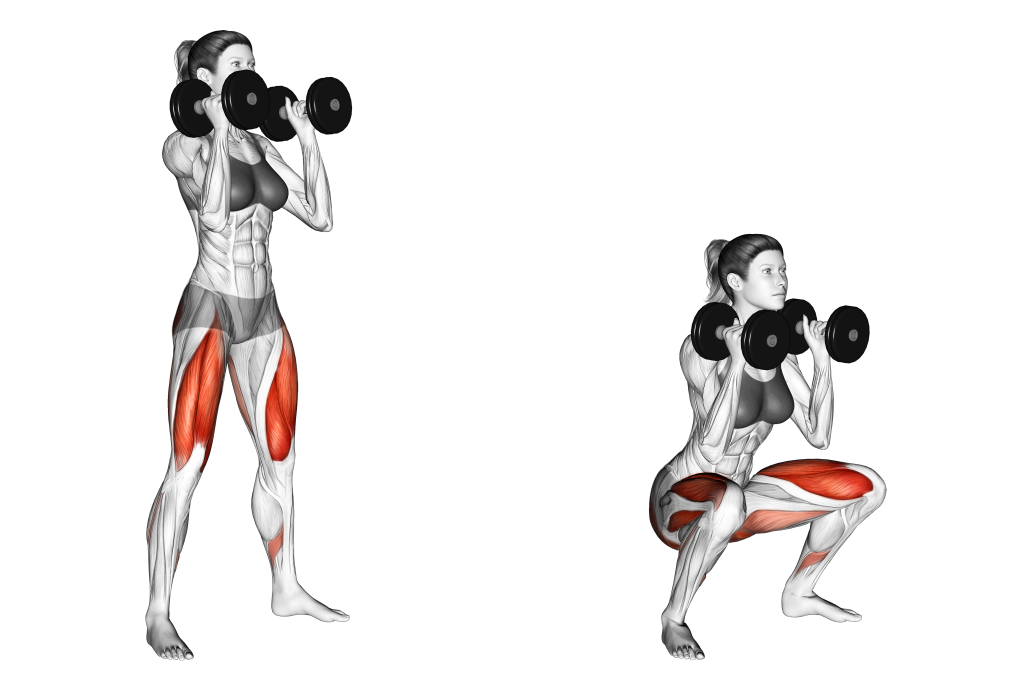
Alongside the mobilizer muscles are the “stabilizer” muscles, of which contract in place and act to support the mobilizers.
Mobilizer Muscles
Dumbbell front squats primarily work the quadriceps muscles, where they act to extend the knees out of depth during the second half of the repetition.
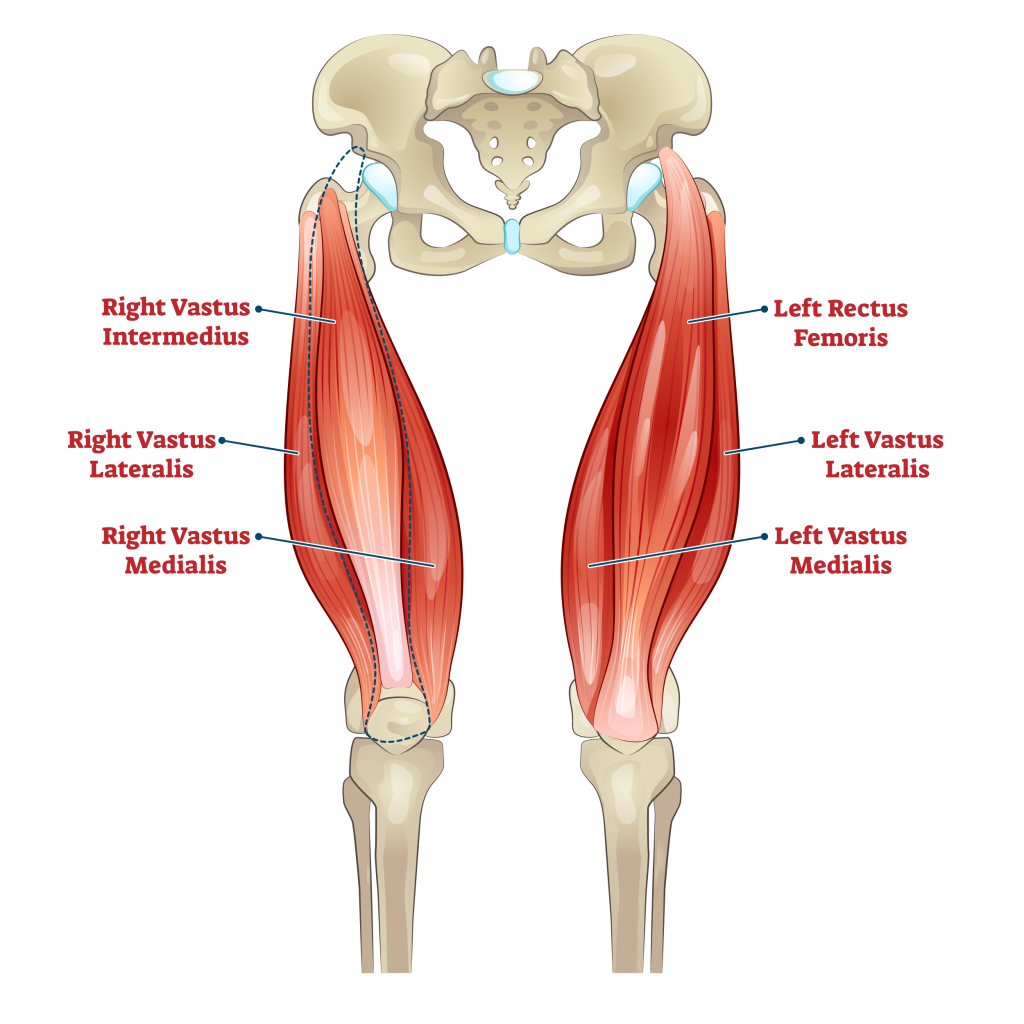
Supporting the quadriceps are the hamstrings and glutes - of which act as secondary mobilizer muscles during hip extension and knee flexion.
The mobilizer muscles work considerably harder than the stabilizer muscles, meaning that they will also receive the majority of the training stimulus created by performing the exercise.
Stabilizer Muscles
Throughout the entire repetition, the core muscles, erector spinae and the deltoids will act to stabilize both the body and the dumbbells atop the shoulders through isometric contraction.
Unlike the mobilizer muscles, the stabilizers do not visibly lengthen or shorten, equating to less muscular hypertrophy but also less fatigue accrual.
Common Dumbbell Front Squat Mistakes to Avoid
In order to optimize your workout and avoid injury as much as possible, avoid the following common front squat mistakes.
Poor Range of Motion
As is the case with practically all forms of squat, failing to reach sufficient depth will directly reduce the effectiveness of the dumbbell front squat - leading to poor muscular development, the creation of sticking points and greater strain on the knee joints.
A full range of motion will involve each repetition starting and ending with the hips and knees locked out, whereas maximum depth should have the knees and hips parallel at the least.
If you are having difficulty reaching proper depth without tipping over, it is possible that your stance is too wide or that the hips aren’t being pushed far enough backwards.
Forward Trunk Lean
While some level of forward trunk lean is needed to maintain balance with a back squat, the front squat allows for the trunk to be nearly entirely vertical without a loss in stability.
Lifters must take advantage of this by aiming to reduce the angle of their torso as much as possible. The head and chest should not cross more than several inches beyond the knees, if at all.
Leaning too far forwards will place the lower back and spine at risk of injury as they may bend out of proper neutral alignment - not to mention that actually keeping the dumbbells racked atop the shoulders is quite difficult when they are leaning towards the ground.
Upper Back Curving Forwards
Just as leaning the entire trunk forwards is poor technique, so too is allowing the upper back and shoulders to curve forwards. This sort of mistake can lead to a breakdown in overall form, and otherwise place the cervical spine and shoulders at risk of injury.
In most cases, poor upper back curvature or internal shoulder rotation is simply a result of the lifter failing to adjust the weight atop their shoulders correctly. The elbows must always remain pointing away from the body, if not entirely forwards.
Knee Valgus or Internal Femur Rotation
The term knee valgus refers to a pronounced deformity where the knees bend towards one-another - or what is otherwise known as being “knock kneed”.
During the dumbbell front squat, allowing the knees to rotate towards each other can greatly increase torsion within the joints themselves, leading to a heightened risk of injury and also potentially disbalancing the lifter as well.
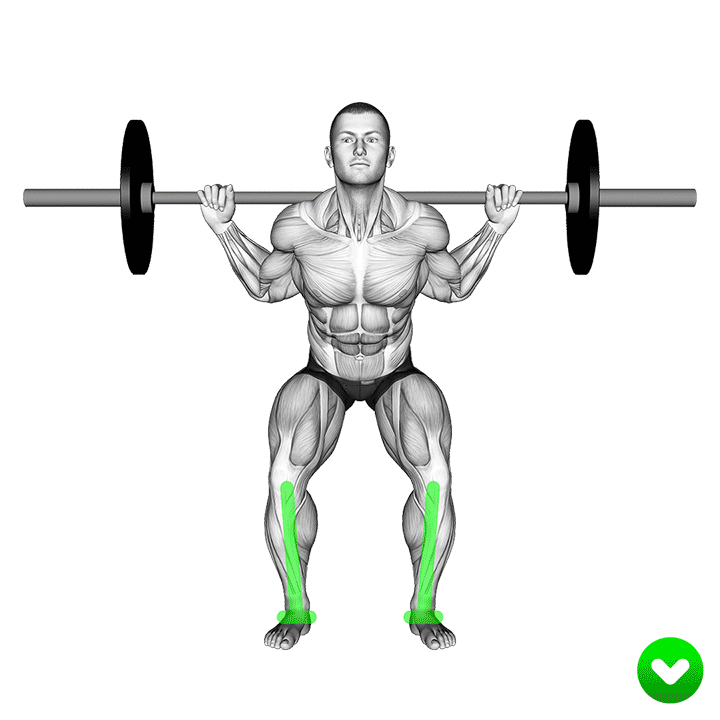
Because the front squat features a somewhat more narrow stance than other squat variations, lifters exhibiting this particular technique mistake are most likely pointing their feet inwards as they set up their stance.
To avoid doing so, it is important to ensure that the toes are pointing either forwards or slightly outwards before beginning the front squat set.
Heels Rising Off the Floor
Applicable to all variations of squat - the heels rising off the floor can lead to acute injury of the calves and other lower leg soft tissue as the body can no longer evenly distribute the pressure through the entire foot.
It is absolutely vital for the heels to remain pressed into the floor throughout every set, especially with the dumbbell front squat where the distribution of load is far more vertical to the ground.
In most cases, rising heels are a sign of poor ankle tendon flexibility or unsuitable footwear being used. Lifters should adopt an ankle mobility stretch prior to their lower body workout, and look into shoewear that features an elevated heel for reduced mobility demands.
Dumbbell Front Squat Alternatives and Variations
If you find the dumbbells to be too uncomfortable on your shoulders (or if you want to try more complex movements), look into the three following alternative exercises.
Dumbbell Goblet Squats
Dumbbell goblet squats are frequently confused with front squats due to their similarity in equipment, stance and technique.
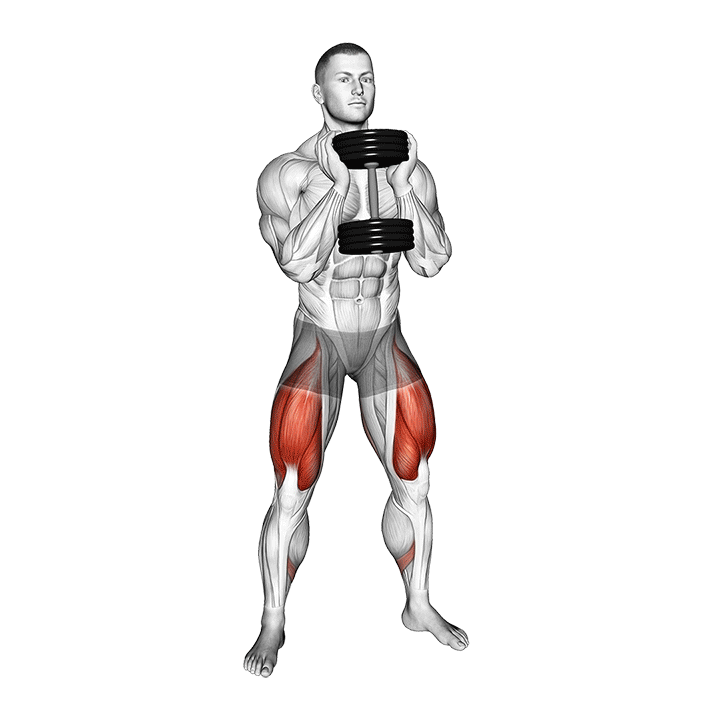
However, the goblet squat does indeed make use of a wider stance, and will place the load at the front of the chest between both palms, rather than atop the shoulders.
With the load suspended in this way, the goblet squat necessitates a less vertical trunk angle and somewhat greater recruitment of the posterior chain musculature.
Essentially, dumbbell goblet squats are a wider, less uncomfortable, less technical but also less quad-dominant alternative to the dumbbell front squat.
Dumbbell Zercher Squats
The dumbbell Zercher squat is an “odd lift” involving the dumbbell being suspended between the crooks of the elbows, rather than in the hands.
The actual positioning of the weight is reminiscent of goblet squats, only with significantly greater deltoid and biceps contraction due to the lack of stability and security.
Dumbbell Zercher squats are a highly specific alternative to dumbbell front squats primarily used by Strongman competitors and similar types of lifters for their greater loading capacity and overall more functional stance.
Dumbbell Sissy Squats
The dumbbell sissy squat is an advanced squat variation involving the lifter kneeling towards the ground while angling their trunk backwards, as if performing a knee slide but with the toes still touching the ground.
Sissy squats are a far more quadriceps-focused substitute to dumbbell front squats that further offer the benefit of enhanced balance, stability, mobility, core strength and calf muscle recruitment.
Frequently Asked Questions (FAQ)
Why are Dumbbell Front Squats Harder?
Dumbbell front squats are more challenging than other squat variations as less posterior chain activation is present - a factor that combines with the vertical distribution of load, greatly increasing the intensity and complexity of the movement.
What are the Disadvantages of Front Squats?
Front squats are limited in their actual loading capacity, meaning that you won’t be able to lift as much weight for a variety of mechanical reasons.
In addition, though front squats are far easier on the back, they are considerably more taxing on the knees as they are forced to bear more of the pressure present.
Is the Front Squat Better for the Knees?
Not quite.
Although some studies do indicate that front squats may be mechanically better than back squats as far as knee strain goes, the overall more upright stance and vertical distribution of load will still pressure the joints more than a low bar back squat would.
As of now, the jury is out on whether front squats are indeed universally better than back squats for the knees. We advise lifters to experiment with both to see what feels more comfortable.
References
1. Gullett, Jonathan C et al. “A biomechanical comparison of back and front squats in healthy trained individuals.” Journal of strength and conditioning research vol. 23,1 (2009): 284-92. doi:10.1519/JSC.0b013e31818546bb
2. Bautista D, Durke D, Cotter JA, Escobar KA, Schick EE. A Comparison of Muscle Activation Among the Front Squat, Overhead Squat, Back Extension and Plank. Int J Exerc Sci. 2020 May 1;13(1):714-722. PMID: 32509107; PMCID: PMC7241624.

